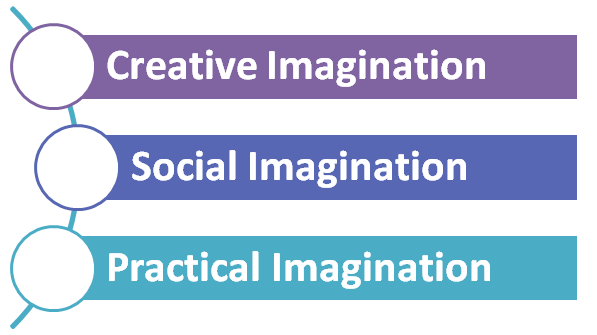

Introduction
Leaders are an organisation’s vanguard. They bring development starting with creative ideas or bringing solutions to existing problems. Leaders engage themselves in creative problem solving which is one of their greatest strengths. But what acts as an ignition to such problem-solving?
Research has shown that Imagination, Motivation, Experience and Knowledge are pillars of a creative problem-solving mind. So, it is safe to think a leader who is a problem solver stands on these four pillars to bring success and growth to an organisation. So, what is the order in which a creative leader employs these pillars to a problem or What should be a creative leader’s first step?
It should be imagination. All wonderful things start with imagination. In this blog, we will talk about how leadership can start a ripple effect with imagination. So, let’s begin.
Leader and Imagination
Leaders are hired to solve critical problems, bring value to the organisation and innovative ideas. Latest ideas or innovative ideas create a ripple effect for the teams in the organisation. They create a positive impact on the entire organisation.

Then one would wonder, what is Imagination?
Imagination
Oxford Dictionary defines imagination as “The ability to create mental pictures or new ideas.” In terms of leadership, Imagination is the capability to solve or approach critical problems with creative solutions.
So, an imaginative person can be a leader of an organisation? Not exactly. Leadership role has many attributes and Imagination is one of them.
Then,
How Does a Leader Solve Critical Issues with Imagination?
A leader puts ideas together and imagines a constructive way to the problem. He adds and subtracts ideas that would normally be not put together. He ponders over the possibility of what, who, why and how of the problem. He also imagines the practical form of his solution. He doesn’t use a single type of imagination but several types of them to be precise three types of imagination.
Type Of Imagination

Alexander Stephen Kier and Jeffery S. McMullen in their research called “Entrepreneurial Imaginativeness in New Venture Ideation” talks about three types of imagination. They are – Creative Imagination, Social Imagination and Practical Imagination.

Creative Imagination
In creative imagination, leaders take their cognitive skills to find innovative ideas. They find fresh approaches to an existing problem or explore new facets to a solution that might bring new success to the venture. It also helps leaders to create a connection between unrelated pieces of information to generate new ideas.
Social Imagination
In social Imagination, leaders use their cognitive skills to imagine solutions within a broader context of individual experiences and societal reality. That means a leader using a social imagination would imagine the current problem at hand with the eye of another’s point of view. It also enables the leaders to understand other’s needs
Practical Imagination
In practical imagination, leaders use their cognitive skills to imagine solutions for planning, analysing, or managing resources or tasks. It also enables leaders to find problems that need solving.
Research has also shown that these three forms of imagination crunch a lot more ideas for organisations.
An organisational leader employing imagination with such clarity and dexterity will definitely encourage his peers and team members to buckle up. Such a healthy way of operations will create ripple effects of knowledge, productivity, and positivity.
Conclusion
Leaders think of the bigger picture. Their role demands it. With their keen eye and sense of judgement bring strategic and creative solutions to problems and also innovative ideas for new ventures. Such a leader will definitely have followers who will ride his wave of imagination and will become leaders themselves.
At SIT (Stanford Institute of Technology) we offer courses that lay a strong foundation for your leadership journey. Find out more.
